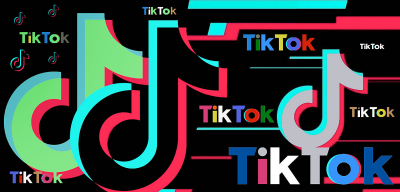Math TikTok Don’t Stop for Computer Science Course

“These are from Alina, they're really quite funny,” said Bruce Donald, James B. Duke Distinguished Professor of Computer Science and Mathematics, while scrolling through TikTok on his iPad.
Donald explained that while he may have quite a few citations under his belt, there’s something his students have that he doesn’t: twenty thousand views on TikTok. He makes use of the social media app’s precise algorithm to show videos made by other students in his section of CS230: Discrete Mathematics for Computer Science.
At its core, CS230 is a mathematics class. Made up of primarily sophomore Computer Science majors, Donald describes it as an introduction to discrete mathematics.
“The idea is to get these students excited about mathematics with the tools to go on to do more computer science if they want to,” he said. “Really, it's a hardcore math class disguised as a programing class.”
The light-heartedness and fun of TikTok can bring some levity while still being educational, Donald said.
Like many late adopters, Donald was first introduced to TikTok during the initial months of the COVID-19 pandemic. The empty nester found himself once again with a house full of kids, sent home from their universities for “extended spring break.” They showed Donald the app, and once he got into it, he realized there was much more to it than funny dances.
“It's much more accessible than YouTube because it has to be short,” he said. “The creators are really funny and interesting. There’s stuff about geometry, physics, Italian cooking, whatever you’re interested in.”
Seeing how much fun TikTok was — both for him and his college-aged kids — Donald had the idea to incorporate it into CS230 by letting students reply to some of his discussion questions in the form of a TikTok.
Most of Donald’s students were already using the app, so they were positive about the opportunity, the professor said.
“When Professor Donald first introduced the TikToks in class, I was very excited,” said Computer Science major Rhea Tejwani. “Before this, I was mostly watching videos rather than making them, so I had a lot of fun using trending sounds on TikTok to make my videos.”
Donald explained that the app lends itself quite well to the content of his class. While the machine learning algorithms that TikTok uses to serve the user content are very good, the real value in it is the brevity of the videos, he said.
When sitting in on a colleague’s class, he realized how challenging it can be to stay focused on meaty topics, even if it’s one you are very interested in. Donald has his own videos up on YouTube for students to view, but wondered if they encountered the same challenges with the length.
“Is there a way to get points across in the smaller, more fun format?” he asked. “And could it be student-generated, because I'm not going to know all the trends?”
The end result was students creating videos for the class based on what they wanted to talk about, whether that was Turing’s halting theory, computability or transcendental numbers.
Tejwani agreed with Donald’s assessment. “In class, we were learning about a lot of big ideas and complex problems, so trying to compress them into a clear and concise 60-second video really helped me understand those topics,” she said.
@liltejie pov you’re my friends watching we make this #Duke #DukeCS #DiscreteMathforCS #cs230 ♬ What? Am I? - akil elijah
Donald also turned the TikToks into a competition. He told his students that whoever came up with the best one at the end of the semester would have their grade raised. “It was a dead heat between two wonderful students that I got to know, and they just did a fantastic job,” he said. In the end, he awarded the prize to both of them.
In a time where it was more difficult to get face-to-face interaction with his students, Donald realized that the TikTok part of the class gave him a way to get to know his class better.
“I didn't expect it to be so funny,” he said. “I expected some things to be maybe a little bit dry, but they really found a way to integrate the class work with the youth culture and explain things.”
Asked if he thought students were able to convey their ideas precisely and concisely using the app, Donald smiled and replied, “As they say on TikTok, they understood the assignment.”
To view the students’ TikToks, search the hashtag #cs230.



